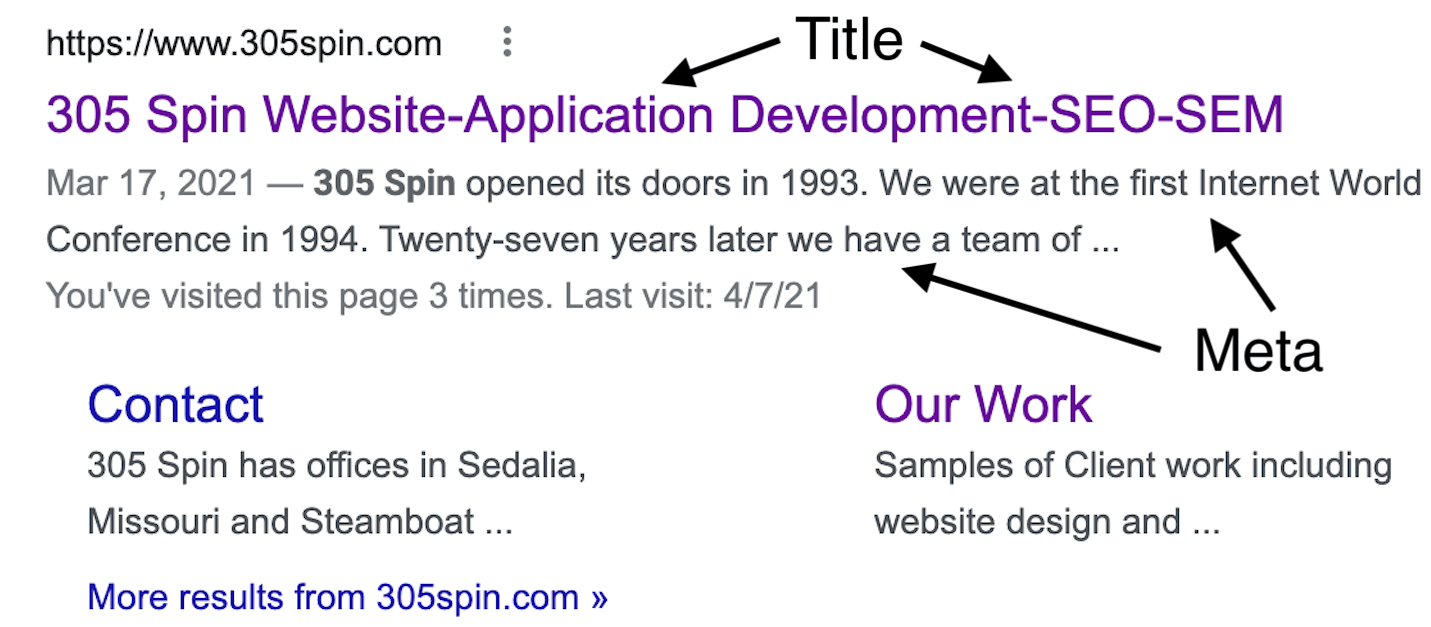We’ve all been there before: Full of excitement after implementing your brilliant new SEO strategy. Why wouldn’t you be excited? Your new strategy is going to send you thousands of new visitors free of charge.
Reflecting on your hard work, your website starts to climb the Google search results … until it gets stagnant on Page 2. Oh no! Not Page 2! What happened to my momentum!?!
Don’t worry; By correcting a few simple SEO mistakes you may be making, you can regain all of your momentum and continue the climb to the Number 1 spot on the Search Engine Results Pages.
Here are the most common SEO mistakes we’ve seen as well has how to correct them.
Mistake 1: Not Having an SEO Plan
Only 36 percent of small businesses had an SEO strategy last year, according to Clutch.
Benjamin Franklin once said, “If you fail to plan, you are planning to fail.”
Building an effective SEO strategy is critical for success.
In order to build an effective SEO strategy, you must have buy-in from everyone who will be working on the project, including: web designers, marketers, IT staff, engineering, and leadership.
A great way to start is by setting goals. Then you can plan out smaller realistic steps you need to take to hit those goals. Or as we at softserveSEO like to say, “If you’re going to have the whole cone, you have to eat it one bite at a time.” ????
Mistake 2: Not Knowing your Audience
Let’s start off with another quote by Meredith Hill: “When you speak to everyone, you speak to no one.”
This sounds simple, but it’s amazing how many people fail to accurately understand their target market. How old are they? What is their gender? Where do they live? What are they interested in? What are their beliefs? The list goes on and on.
You need to have an answer to every one of these questions. You need to be able to sympathize with your target market. You need to know your target market just like they know themselves. Once you truly understand your target market, you will understand what makes them want to purchase and how to sell to them.
Now that you have a true knowledge of who you customers are, you can select effective keywords.
Mistake 3: Not Optimizing the Right Keywords
This is a very important one. It’s best to be as specific as possible when finding keywords to use to speak to that target audience you defined above.
There are a couple of keyword categories to be careful of.
- Generic Keywords– They may attract people who are not really interested in your content and don’t find real value from your offering.
- Global Keywords– You shouldn’t be using them if you offer only local services.
- Broad Keywords– They can be extremely competitive and difficult to rank for.
- “Cheap” Keywords– These are keywords that are targeting people that are looking for something free and will never have any real interest in buying something from you.
Pro tip: Focus on long tail keywords. Long tail keywords are keywords with over three words. Long tail keywords have much less competition and more intent that regular keywords – resulting in a higher conversion rate.
For example, a pizza restaurant wouldn’t want to focus on ranking for the broad, general keyword, “Pizza.” Instead, it would be better to rank for a long tail keyword such as, “Best pizza places near me”, or “gluten free pizza in Sedalia, Missouri.”
softserveSEO includes a training module on Keyword Research, including finding the best keywords if you want to further your knowledge.
Mistake 4: Not Having Unique Title Tags and Meta Descriptions
Meta descriptions and title tags are critical elements of SEO that can’t be skipped. They are both bits of HTML code that appear in the header of a webpage. They are also shown whenever your page appears in a Search Engine Results Page (SERPs).

The title tag is a web page element that summarizes the content found on a page. It appears on browsers, SERPs, and external sites.
Search engines expect a title tag to include relevant keywords and phrases to describe what the page is about. Ensuring your title tag includes the necessary elements is critical to SEO success.
A meta description is a short summary of the content found on the webpage. It is longer than the title tag and therefore is able to provide more information on what the page is truly about. A well-written meta description will give users a compelling reason to click on your page. Additionally, a meta description helps to tell a search engine what the webpage is about.
Google uses your title tags and meta descriptions when crawling the web as part of its indexing process. Optimizing your title tags and meta description will help you rank higher in SERPs.
It’s important to find a sweet spot with the length of your title tags and meta descriptions.
For title tags, shoot for 50 to 60 characters.
For meta descriptions, the sweet spot is 140-160 characters.
Mistake 5: Not Being Patient
SEO optimization takes time. Results aren’t going to happen overnight. However, when you are dedicated to consistently implementing best practices, results are inevitable.
People who commit to SEO best practices can usually expect to see results within the first two months.
Factors such as the size and age of your website, your business’s industry and competition will also affect results. Effective SEO takes heavy lifting in the first month or two of starting to focus on SEO.
Once you achieve your desired results, that’s great! But keep going! SEO is not something that can be done once and never again. The digital landscape is always changing. For example, new competitors can arise, or the search engine algorithms change. Your business also continues to evolve, which may mean you want to include additional offerings or include different messaging. You need to adapt you SEO strategy accordingly as your business circumstances change.
Mistake 6: Overlooking Mobile Traffic:
Did you know, over 60 percent of all searches in the US are conducted on a mobile device?
Now more than ever it is critical to optimize your sites for a fast and mobile friendly experience.
Google can recognize when your website is not mobile friendly through its mobile-first indexing. Google will prioritize your page for being mobile friendly and lower rankings if pages are not mobile friendly.
Another important factor to consider is page speed. Google will prioritize sites with a fast load speed in its SERPs.
Mistake 7: Using the Wrong Tools
Using the correct tool can make a world of difference. Our favorite tool is softserveSEO.
softserveSEO will teach you everything you need to know about SEO to improve your website rankings and organic traffic.
From SEO 101 to how to create a site map, perform keyword research, test your website’s page speed and analyze Core Web Vitals, the softserveSEO checklist will walk you through the basics.
Quickly get your website performing at its best and learn the methods that will affect your site more quickly as well as long-term strategies for maintaining and improving SEO.
Learn more about softserveSEO here.
Conclusion
Optimizing a site is an intricate, and sometimes challenging, process.
It takes time, planning, and patience to achieve results with search engine optimization.
But if you’re willing to invest the resources to create and execute a well-planned strategy, the results you’ll see will make it more than worthwhile.
Good SEO will boost your site’s credibility, earn more traffic, and improve your online visibility.
Better yet, you’ll achieve those results without spending a penny on PPC ads.
Beyond that, SEO is a great way to improve the overall experience your customers have with your brand. When you create content that’s in line with their needs, and make it easily accessible on a user-friendly site, you position yourself as a helpful resource.
Avoid these common mistakes and take control of your website’s SEO. No matter what industry you’re in, effective SEO will help you reach you marketing goals.
What’s Next:
Wondering where to get started? Check out softserveSEO.
softserveSEO will teach you everything you need to know about SEO to improve your website rankings and organic traffic. From SEO 101 to how to create a site map, perform keyword research, test your website page speed and analyze Core Web Vitals, the Soft Serve SEO checklist will walk you through the basics. Quickly get your website performing at its best and learn the methods that will affect your site more quickly as well as long-term strategies.
softserveSEO offers three plans to make SEO an option for any option. Click here to get started.







